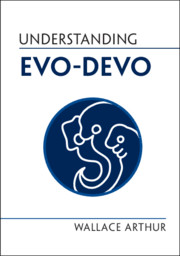Book contents
- Understanding Evo-Devo
- Series page
- Understanding Evo-Devo
- Copyright page
- Reviews
- Dedication
- Contents
- Foreword
- Preface
- Acknowledgements
- 1 What is Evo-Devo and Why is it Important?
- 2 Antecedents of Evo-Devo
- 3 Evolutionary and Developmental Essentials
- 4 Evo-Devo Essentials
- 5 The Evolution of Variations on a Theme
- 6 The Evolutionary Origins of Themes and Novelties
- 7 The Evolutionary Origins of Body Plans
- 8 Body-Plan Features and Toolkit Genes
- 9 Bringing It All Together
- Concluding Remarks
- Summary of Common Misunderstandings
- References
- Figure Credits
- Index
6 - The Evolutionary Origins of Themes and Novelties
Published online by Cambridge University Press: 29 April 2021
- Understanding Evo-Devo
- Series page
- Understanding Evo-Devo
- Copyright page
- Reviews
- Dedication
- Contents
- Foreword
- Preface
- Acknowledgements
- 1 What is Evo-Devo and Why is it Important?
- 2 Antecedents of Evo-Devo
- 3 Evolutionary and Developmental Essentials
- 4 Evo-Devo Essentials
- 5 The Evolution of Variations on a Theme
- 6 The Evolutionary Origins of Themes and Novelties
- 7 The Evolutionary Origins of Body Plans
- 8 Body-Plan Features and Toolkit Genes
- 9 Bringing It All Together
- Concluding Remarks
- Summary of Common Misunderstandings
- References
- Figure Credits
- Index
Summary
In the previous chapter we looked at several different kinds of developmental bias. One of our conclusions was that there are both specific biases, such as the numbers of centipede trunk segments and mammalian neck vertebrae, and general biases, such as the tendency for variant developmental trajectories – and in particular viable ones – to be clustered close to the ancestral trajectory. For example, in the case of snails we noted that the forms of developmental repatterning that were generally available for natural selection to act on were slight quantitative modifications of the pattern of development of the snail that was the ancestor of the clade concerned – an example being developmental trajectories leading to differences in adult shell size. Acknowledging this form of bias entails accepting that evolution of body form does not usually take place via radical-effect macromutations. This is interesting because we saw in Chapter 2 that from the late nineteenth century to the mid-twentieth century, prominent biologists who had a specific interest in the evolution of development, such as William Bateson, D’Arcy Thompson, and Richard Goldschmidt, took a macromutational approach.
Keywords
- Type
- Chapter
- Information
- Understanding Evo-Devo , pp. 96 - 113Publisher: Cambridge University PressPrint publication year: 2021

